We kindly inform you that, as long as the subject affiliation of our 300.000+ articles is in progress, you might get unsufficient or no results on your third level or second level search. In this case, please broaden your search criteria.
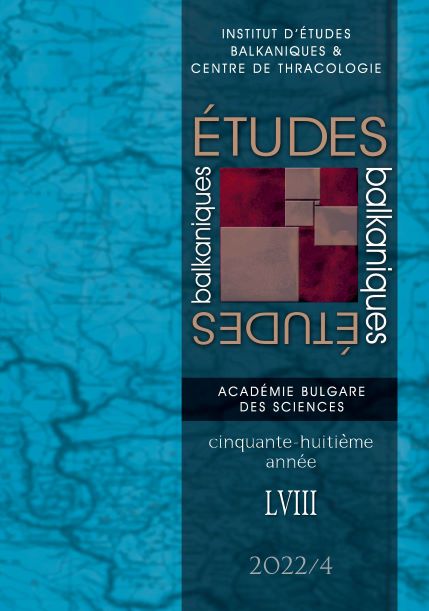
The present article is focused on separate aspects of the political skirmish between two prominent representatives of the Bulgarian and Greek communities – Nayden Gerov (1823 – 1900) and Georgios Tsoukalas / Γεώργιος Τσουκαλάς (1804 – 1872). At the beginning of the 50s of the XIX century, the establishment of the Bulgarian school in Plovdiv gave rise to one of the first public disputes between the two ideologists in the context of the development of nationalisms. The article depicts some moments from the Bulgarian-Greek arguments on the pages of periodicals – ‘Tsarigradski vestnik’ and ‘Bosphorus Telegraph’. In a word duel, the two intellectuals resort to the specific pejorative rhetoric of subversion and slander. This strategic rhetoric is characterized by an intensified ideological load and lavish figurative argumentation, often accompanied by expressive ideologies, with a multitude of offensive words, provocations and critical comments. Through the use of such rhetorical techniques, the prominent socio-political figures aim not simply at the personal undermining of their opponent, but above all, at defending their own ideology and contestation of the alternative opinion. In the confrontation between the text strategies (some of them deliberately anonymous, allowing the identification of the people with the text) of N. Gerov and G. Tsoukalas, the two political programs are revealed in their contrast and convergence to the own / foreign ideological code.
More...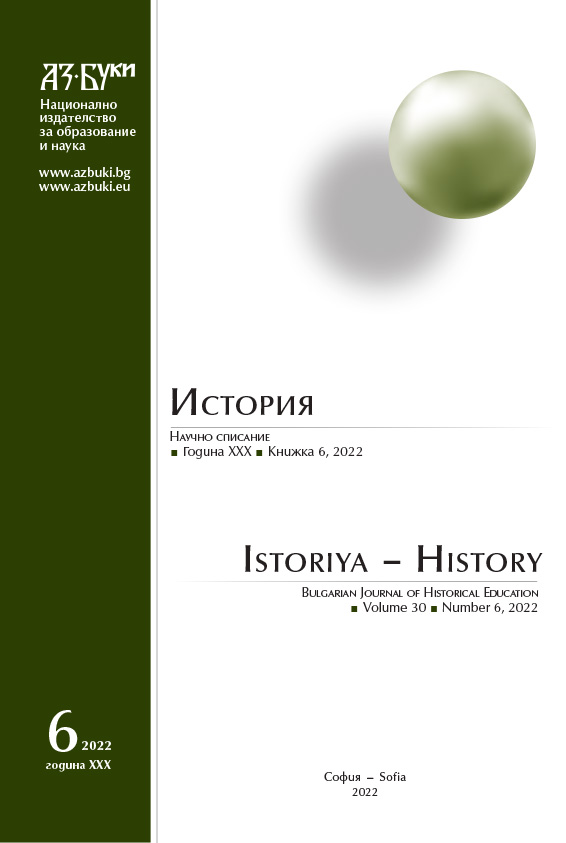


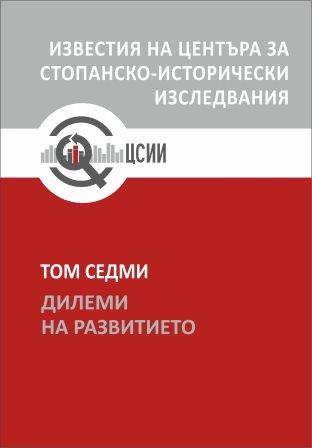
In this paper we explore the long-term developments of consumer prices in Bulgaria for the period 1750–2020. The discussion draws on a component-based index of consumer prices constructed by the authors. We consider both nominal price-level time series and real prices of selected essentials (bread, meat, sugar, tobacco, alcohol, and construction goods used by households). For the reviewed period, we identify two major inflationary episodes, namely the two World Wars and the interwar period, and the period of post-communist transition. For the former, we compute an increase of the price level of about 46 times. For the latter, we arrive at a mind-blowing analogical result of over 3800 times. A curious finding concerns the communist period. Contrary to popular beliefs established through a massive propaganda of no-inflation socialist economies, we discover an overall increase of the price level for that period of nearly 4 times. Real prices of individual commodities are calculated by deflating nominal figures by the value of the corresponding base consumer price index. The inspection of their dynamics leads to uncovering hidden insight related to the developments of specific markets. Also, it allows to assess more clearly the similarities and differences of real price evolutions over different political regimes. For example, we find that the real price of bread in the times of communist rule did not contrast markedly with its levels in preceding and succeeding periods. Another example points to the conclusion that in the years of EU membership, the real prices of most commodities that we consider follow a path of decline. This suggests that statements on the economic developments in those years which rely heavily on the popular perception of lower affordability should at least be taken with a grain of salt. The availability of our results could facilitate further explorations into the nature and specifics of the economic and social development of Bulgaria over a long period of time.
More...
The article presents Bulgarian market main foreign trade relations in the period of its foundation, i.e. in the 1850s, 1860s and 1870s. The Bulgarian lands foreign trade during this period is presented as an attempt to answer the question which foreign markets have the strongest influence on the processes in the Bulgarian economic space. The research paper is based on primary archival sources from the French Diplomatic Archives (Archives diplomatiques du Ministère des Affaires étrangères), mainly on reports of French consuls in Plovdiv (Philippopolis), Varna, Kustendje (Constanța) and Tultcha, on the data of archival sources and published research results concerning large Bulgarian companies such as “Evlogiy and Hristo Georgievi”, “Hristo P. Tapchileshtov” and others. The main conclusion of this article is that the foreign trade dilemmas facing the Bulgarian market in the third quarter of the 19th century in the alternative between the East and the West were decisively resolved in favour of the West, in favour of Western and Central Europe. Cereals, silkworm cocoons, rose oil, wool and tobacco are exported from the Bulgarian lands to the European markets while colonial and manufactured goods are imported. Another important conclusion is necessary – since its consolidation in the middle and in the third quarter of the 19th century, the Bulgarian national market is closely connected to the free European market and this is a good reason for the Bulgarians to adjust to the free market behaviour – a behaviour that’s not tied with political interventions or ideological interventions.
More...
During the Bulgarian National Revival period there were settlements across Ottoman Bulgaria where a number of public figures, revolutionaries and businessmen were born and raised. The reasons for the appearance of such alert people are numerous and interrelated. Among the factors can be mentioned the specific natural and climatic conditions, the favourable geographical location of such settlements; the awake public atmosphere in them; intensive development of craft production and trade; availability of near and distant markets; the institutional changes in the Ottoman Empire; etc. On the other hand, it seems that very important are social, family and human capital– assets that are purposefully created and maintained in such settlements. The purpose of the current article is to shed light on regions and settlements where rapid economic and social development was not available in the 18th and 19th centuries. The main question I will try to give an answer is why an entrepreneurial class did not emerge in some regions and settlements during the Bulgarian National Revival period. There are several factors that contributed to the fact that a Bulgarian entrepreneurial class did not appear in regions such as the Black Sea area, the western and south-eastern Bulgarian lands (with some exceptions), etc. The factors are as follows: the privileged status of the local population in the 16th and the 17th centuries did not have a positive impact on the socio-economic processes later; the low influence of the Tanzimat reforms; the absence of more active market relations; the slower incorporation of some of the mentioned regions into the emerging national market; the lack of a larger urban centre in the region of Gorna Struma, which would stimulate more active economic processes and connections in the region and beyond it; the presence of competing ethno-confessional groups (Greeks, Jews) that have entrepreneurial experience and contacts; the specific economic conditions that helps to cultivate archaic mentality in some regions; the complete or partial absence of social and family capital; the lack of human capital, as well as institutions (such as secular schools, etc.) that could contribute to its creation and maintenance; the lack of Greek cultural influence, which contributed to the formation of people with a particular economic thinking and behaviour in other regions. There are regions and settlements across Ottoman Bulgaria that did not impress with their dynamic socio-economic and public development during the National Revival period. Their historical destiny deserves to be researched because it could give us a more realistic idea of the socio-economic transformations that took place in the 18th and especially during the 19th century.
More...
The restored in 1879 modern Bulgarian state found itself in a difficult economic situation. With its economic backwardness, the political parties in the country were persistently looking for models who could allow them to accelerate and catch up with the other European countries. One of the ideas was to use the cooperative as a tool to catch up with the century's lag. However, the situation in the economic sector was such that practical actions were mainly in the area of “Raiffeisen cash registers” and "popular banks", while other types of cooperatives were practically invisible in real economic exchange. In their documents, all organizations gradually accepted the need for a policy of "patronage", which must be carried out with the mechanisms of state policy, especially through the financial sector and ensuring access to cheap credit from the cooperators. Some parties, especially those from the leftist and populist sector, accepted that the cooperative idea can be useful only with direct political intervention in the sector and even through organizational connection between parties and active cooperatives. This early model of authoritarian impulses was extremely persistent in Bulgarian politics and survived even the entire twentieth century. This leads to a distortion of economic relations and a steady increase in state intervention and control over cooperative networks.
More...
Reviews of: Kirjarahva pildiraamat. Fotosid aastatest 2001–2009. Pildistanud Alar Madisson, koostanud Alar Madisson, Piret Noorhani, Vilve Asmer. Tartu: Eesti Kirjandusmuuseum, Kunst, 2009. [127] lk Kirjarahva teine pildiraamat. Fotosid aastatest 2010–2013. Pildistanud Alar Madisson, koostanud Alar Madisson, Piret Noorhani, Vilve Asmer. Tartu: Eesti Kirjandusmuuseum, 2013. [123] lk. Lev Võgotski. Mõtlemine ja kõne. Psühholoogilised uurimused. Tõlkinud Peeter Tulviste. (Avatud Eesti Raamat.) Tartu: Ilmamaa, 2014. 509 lk. Leo Tolstoi. Mis on kunst? Tõlkinud Andri Ksenofontov. (Avatud Eesti Raamat.) Tartu: Ilmamaa, 2014. 314 lk. Eesti perioodikas ilmunud järjejuttude bibliograafia 1918–1944. Koostaja Kalev Sikk. Väljaandja: Lembit Sikk Pärna talu, 2014. 258 lk + Lisad: Anderomaanid, 6 lk; Errata, 1 lk. Kas sa Tammsaaret oled lugenud? Kirjanduslik eluloovestlus Helga Nõuga. Koostaja Rutt Hinrikus. Tartu: Eesti Kirjandusmuuseum, Eesti Kultuurilooline Arhiiv, 2014. 144 lk. Helga Nõu. Valetaja. Mälestused, tõeotsimised. Tallinn: Eesti Ajalehed, 2011. 280 lk. Martin Klöker. Tallinna kirjanduselu 17. sajandi esimesel poolel (1600-1657). Haridusinstitutsioonid ja juhuluuletamine. Tõlkinud ja eessõna Kristi Viiding. Tallinn: Teaduste Akadeemia Kirjastus, 2014. 679 lk.
More...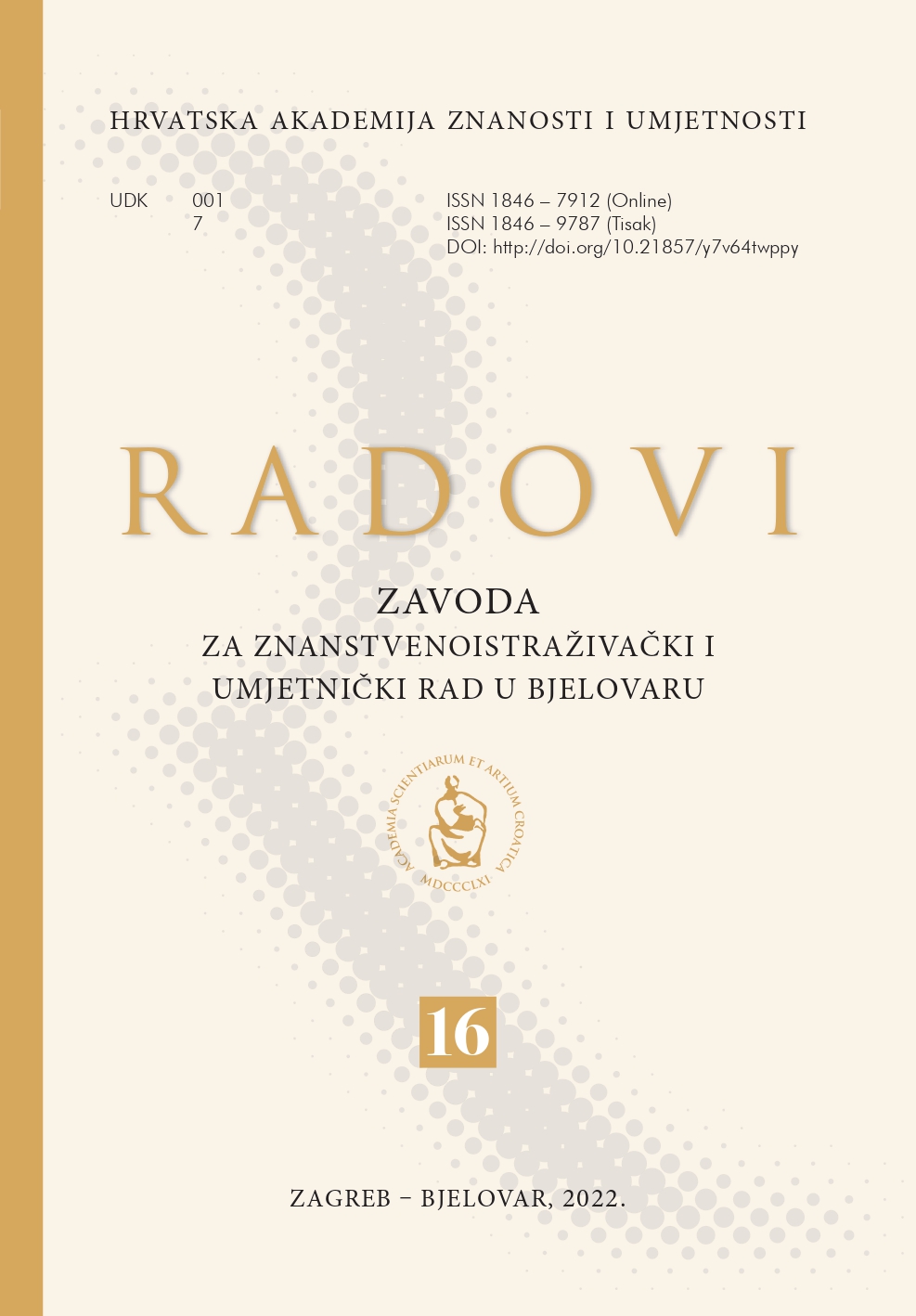
The subject matter is Maria Theresa's policy oriented towards health reforms and positive demography across the Danube Monarchy, which included Bjelovar, a city that Empress Maria Theresa had built in the very centre of the Varaždin Generalate in 1756. This policy consisted of the legalization of medical experts’ education, and the establishment of hospitals and xenodochia based on legal acts covering public health issues, and numerous community regulations. These documents were the key fundament of the later legal health regulations. Before the founding of the city of Bjelovar, there existed no organized or professional healthcare. However, after the founding of the city, legal health regulations were implemented in all components. The first hospital in the city, which still operates today, was established; company sanitary stations with surgeons and company midwives were formed across the Generalate; the first pharmacies were opened; xenodochia (lazarettos) were established in the outskirts of the city as quarantines of a kind; many educated health workers of regulated professions were active in the city and its surroundings: medical doctors (doctors of medicine), junior and senior surgeons, pharmacists, midwives, medical assistants, and nurses. The geographical position of the Varaždin Generalate and Bjelovar, far from active battlefields and the Habsburg-Ottoman border, ensured – thanks to the implementation of regulations covering public health issues – safer public health and the development of healthcare and medicine. The centralized approach of the Viennese court in the second half of the 18th century exercised influence in this respect.
More...
Numerous reforms and breakthroughs, which were truly felt in the coming centuries, marked Maria Theresa's rule. The Cordon Sanitaire, same as Bjelovar, became – thanks to numerous reforms – better organized after her coming to the throne in 1740. The basis for the most prominent among these reforms was the 1770 General Healthcare Book of Rules (Opći zdravstveni pravilnik). Bjelovar was founded as one of the responses to the reorganization of the Military Border, whereas the Cordon Sanitaire was initially established as response to repeated occurrences of the plague in the Habsburg territory, since this situation needed a solution. Unlike Bjelovar, the Cordon Sanitaire ceased to exist after the demilitarization of the Military Border. Nevertheless, its existence and development, same as Bjelovar's, remains one of the symbols of the reorganization of the Military Border and the 18th century in general.
More...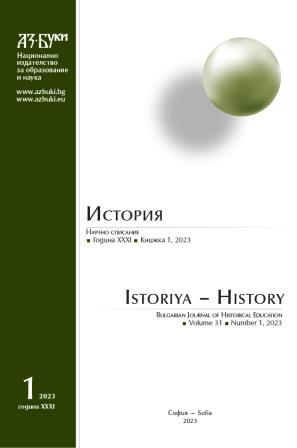
The article published a letter from the Metropolitan of the Diocese of Nisava Antim I, dated August 26, 1854, which refers to the Samokov painter Kostadin Petrovich Valoiv. The content of the letter allows to formulate the hypothesis that the artist worked in the interior decoration of the church “St. Petka” in the town of Trun, probably in 1853 or in the first half of 1854. The document provides information that K. Valiov resided in the town of Pirot in 1854, supplementing his biography, in which there was no information about the period from 1845 to 1856.
More...
The article aims to create a profile of the traveling bookseller in Bulgaria in the 19th century based on existing scientific publications, archival documents, memoirs, and the notes in their books. The portrait is built on a comparative analysis of the traveling booksellers Hadji Nayden Jovanovich and Pencho Radov, popular during the Bulgarian Revival. Their activity and biography have been studied individually up until now. In this article, we compare their trading methods to those Revival booksellers who started as traveling booksellers butexpanded their activity into actual business as publishers and editors – Hristodul Sichan-Nikolov, Hristo G. Danov, Dragan Manchov, and Petko Slaveikov. The purpose is to outline the patterns in the Revival book trading, which build two distinct Revival types – the unfortunate, dusty and wretched retailer (Jovanovic,Penchov) and the sagacious, organized, and modern publisher.
More...

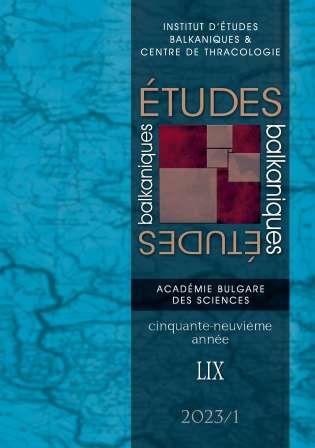
The article is devoted to the establishing and functioning of the Balkan national health systems in the late 19th and early 20th centuries on the example of Bulgaria and Serbia. The comparative analysis shows that in both countries during the period in study serious measures were taken to build a modern health system and the basic indicators derived from statistics show undeniable development in this respect in both countries.
More...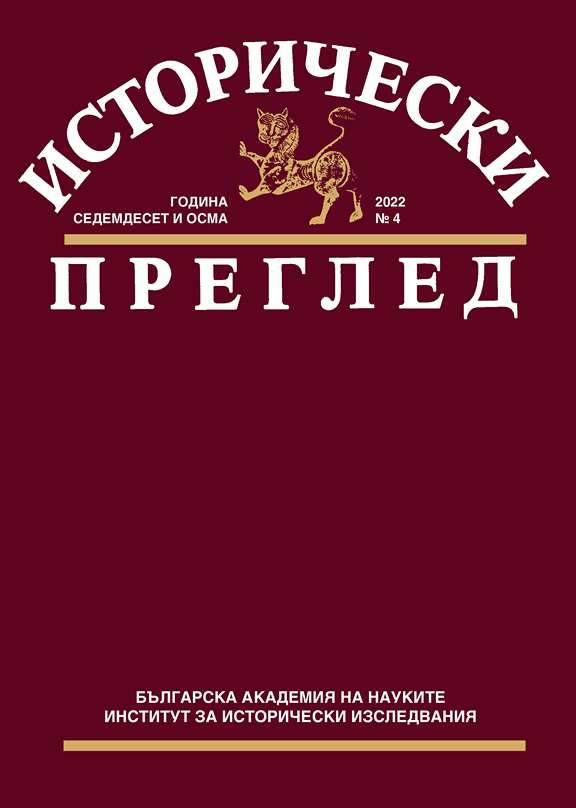
The liberation struggles during the Revival left a deep imprint on the collective consciousness of Bulgarian society. A process of searching for, preserving and popularizing evidence of the past of all kinds was being developed – including photographs, regarding the events and personalities related to the struggle for the liberation of the Bulgarians from the Ottoman rule. Celebrations were held, monuments were erected, historical events were re-enacted. Many of these events were photographed, thus the photographs became testimonies reflecting the desire to preserve the memory of the revolutionary struggle. The article examines photographs of buildings of historical significance, monuments, group and personal photographs of combatants, etc. They are found in various local and central archival collections. The descriptive method used shows how photographs participated in the process of preserving the historical memory of the movement for political independence and their role in the construction of national identity.
More...
